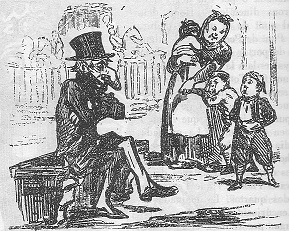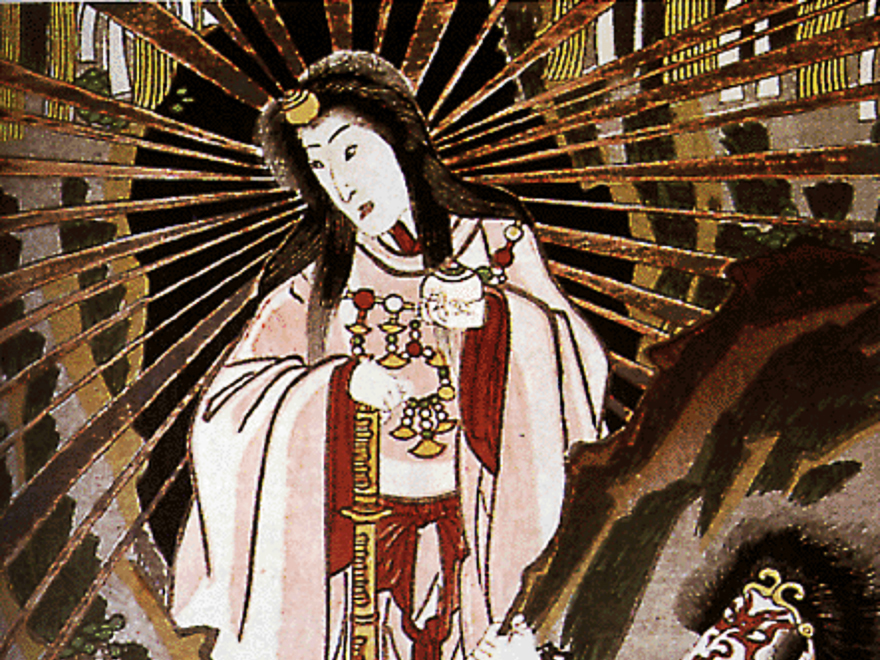Related Research Articles

A devil is the personification of evil as it is conceived in various cultures and religious traditions. It is seen as the objectification of a hostile and destructive force.

Lucifer is one of various figures in folklore associated with the planet Venus. Originally stemming from a son of the personified dawn, the goddess Aurora, in Roman mythology, the entity's name was subsequently absorbed into Christianity as a name for the devil. Modern scholarship generally translates the term in the relevant Bible passage where the Ancient Greek figure's name was historically used as "morning star" or "shining one" rather than as a proper noun, Lucifer.

Catalan myths and legends are the traditional myths and legends of the Catalan-speaking world, especially Catalonia itself, passed down for generations as part of that region's popular culture.
The word mogwai is the transliteration of the Cantonese word 魔怪 meaning 'monster, 'evil spirit', 'devil' or 'demon'.
Tomor or Tomorr is the father of gods and humans in Albanian mythology. He was also referred to as Baba Tomor.
A spiriduş in Romanian mythology is said to be a "demon incarnate", or a domestic spirit, oftentimes taking the form of an avian familiar, such as hens, crows, or hunting birds. The purpose of these familiars once they're summoned, is to act as messengers or intermediaries between the master of the home in which the spiriduş was born, and the devil. The master can use the spiriduş to request from the devil any mortal desire, in return for their soul in the afterlife.
Estonian mythology is a complex of myths belonging to the Estonian folk heritage and literary mythology. Information about the pre-Christian and medieval Estonian mythology is scattered in historical chronicles, travellers' accounts and in ecclesiastical registers. Systematic recordings of Estonian folklore started in the 19th century. Pre-Christian Estonian deities included a sky-god known as Jumal or Taevataat in Estonian, corresponding to Jumala in Finnish, and Jumo in Mari.

A hellhound is a mythological hound which embodies a guardian or a servant of hell, the devil, or the underworld. Hellhounds occur in mythologies around the world, with the best known examples being Cerberus from Greek mythology, Garmr from Norse mythology, the black dogs of English folklore, and the fairy hounds of Celtic mythology. Physical characteristics vary, but they are commonly black, anomalously overgrown, supernaturally strong, and often have red eyes or accompanied by flames.

The nuckelavee or nuckalavee is a horse-like demon from Orcadian mythology that combines equine and human elements. It has its origins in Norse mythology, and British folklorist Katharine Briggs called it "the nastiest" of all the demons of Scotland's Northern Isles. The nuckelavee's breath was thought to wilt crops and sicken livestock, and the creature was held responsible for droughts and epidemics on land despite being predominantly a sea-dweller.
Vörnir is a giant from Norse mythology. He is only extant in Nafnaþulur in the Prose Edda.
Brazilian mythology is the subset of Brazilian folklore with cultural elements of diverse origin found in Brazil, comprising folk tales, traditions, characters and beliefs regarding places, peoples, and entities. The category was originally restricted to indigenous elements, but has been extended to include:

In Sri Lankan folklore, the Devil Bird or Ulama is a creature said to emit bloodcurdling human-sounding shrieks in jungles at night. It is believed that the cry of this bird is an omen that portends death. Its precise identity is still a matter of debate although the spot-bellied eagle-owl matches the profile of Devil Bird to a large extent, according to a finding in 2001. Other possible identities include the forest eagle-owl, the crested honey-buzzard, and various eagles. As the bird is not usually seen and its cry only described in vague terms, Ulama records might also refer to the Ceylon highland nightjar.

A legendary creature is a supernatural animal or paranormal entity, generally a hybrid, sometimes part human, whose existence has not or cannot be proven and that is described in folklore, but also may be featured in historical accounts before modernity.
Barsisa, in Islamic mythology, is an ascetic who succumbed to the Devil's temptations and denied God. He had an enormous impact on the entire Muslim world, from Alexandria to Aleppo and Ḥaḍramawt.
She Devil is a summit in Idaho County, Idaho, in the United States. It forms part of the Seven Devils Mountains. With an elevation of 9,242 feet (2,817 m), She Devil is the 265st highest summit in the state of Idaho. It is considered to be an ultra-prominent peak, one of about 1515 such peaks in the world.
Devils Throne is a summit in Idaho County, Idaho, in the United States. It forms part of the Seven Devils Mountains. With an elevation of 9,045 feet (2,757 m), Devils Throne is the 312th highest summit in the state of Idaho.
Devils Tooth is a summit in Idaho County, Idaho, in the United States. With an elevation of 7,598 feet (2,316 m), Devils Tooth is the 762nd highest summit in the state of Idaho.

The akuma (悪魔) is a malevolent fire spirit in Japanese folklore. It is also described as a category of undefined beings who brought afflictions on humans.
The Slavic creation myth is a cosmogonic myth in Slavic mythology that explains how the world was created, who created it, and what principles guide it. This myth, in its Christianized form, survived until the nineteenth and twentieth century in various parts of the Slavdom in chronicles or folklore. In the Slavic mythology there are three versions of this myth: the first version is the so-called earth-diver myth, which intertwines two main motifs: the dualistic motif – the cooperation of God and the Devil is required to create the world, and the oceanic motif – the pre-existence water, where the seed of the Earth comes from; the second version speaks about the origin of the universe and the world from the Cosmic Egg and the World Tree; the third one about creation from a dismemberment of a primordial being.
References
- 1 2 W. Ramsay Smith (2015). Myths and Legends of the Australian Aborigines: The Porcupine and the Mountain Devil. Ravenio Books. pp. 109–113. ISBN 9780486427096 . Retrieved 15 March 2018.
- ↑ Other Mythology Encyclopaedia